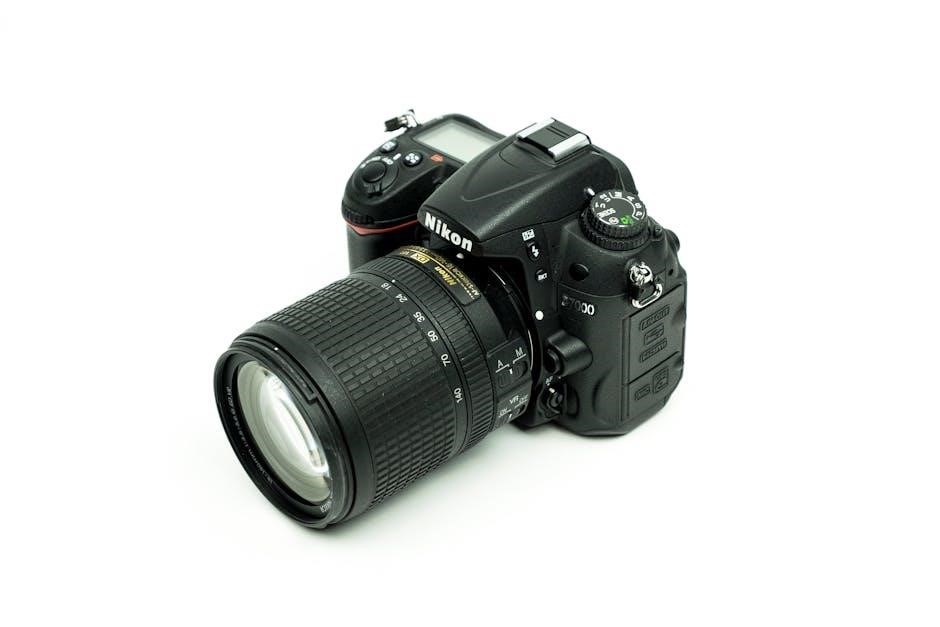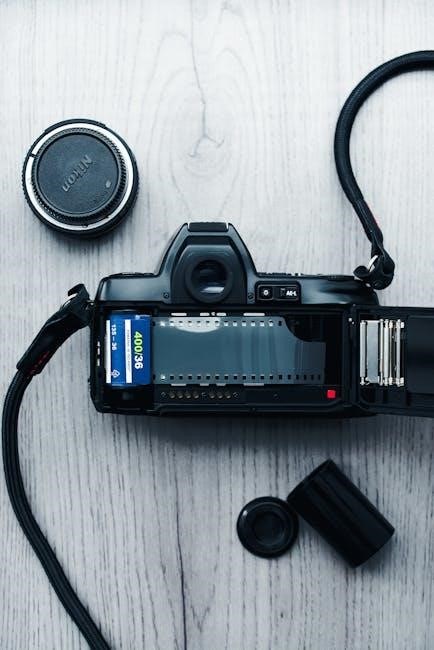Hamilton Beach Egg Cooker Manual: An Overview
Hamilton Beach egg cookers simplify breakfast! This manual details operation‚ cleaning‚ and troubleshooting for perfectly cooked eggs – poached‚ boiled‚ or omelets.
Understanding Your Egg Cooker
Your Hamilton Beach egg cooker is designed for convenient and consistent egg preparation. Familiarize yourself with the components: the base containing the heating element‚ the poaching tray‚ the boiling rack‚ and the measuring cup. These parts work together to deliver eggs cooked to your desired doneness.
The cooker utilizes steam to gently cook eggs‚ preserving their flavor and nutrients. Understanding how water levels affect cooking times is crucial – more water generally means harder-boiled eggs. The auto shut-off feature ensures safety and prevents overcooking. Proper understanding of these elements will unlock the full potential of your egg cooker!
Key Features and Benefits
The Hamilton Beach egg cooker boasts several key features for effortless egg preparation. Enjoy perfectly cooked eggs – hard-boiled‚ soft-boiled‚ poached‚ or even omelets – with minimal effort. Its automatic shut-off function provides peace of mind‚ preventing overcooking and ensuring safety.
The compact design saves valuable counter space‚ while the included accessories offer versatility. Benefit from quick and consistent results‚ making busy mornings easier. Cleaning is a breeze thanks to the removable parts. This appliance delivers convenience‚ reliability‚ and delicious eggs every time!

Getting Started
Before first use‚ familiarize yourself with all components. This section guides unboxing‚ identifying parts‚ and initial cleaning for optimal performance and safety.
Unboxing and Component Identification
Carefully unpack your Hamilton Beach egg cooker‚ ensuring all components are present. You should find the egg cooker base containing the heating element‚ a poaching tray‚ a six-egg holding tray‚ a measuring cup with markings for water levels‚ and the cooker lid.
Inspect each part for any shipping damage. The measuring cup is crucial for accurate water measurement‚ directly impacting cooking results. The holding tray accommodates various egg quantities. Familiarize yourself with the steam vent on the lid; it’s vital for safe operation. Retain the packaging for potential future transport or storage needs. A quick visual check confirms everything is accounted for before proceeding.
Initial Setup and Cleaning
Before first use‚ thoroughly clean all removable parts – the egg trays‚ poaching tray‚ and measuring cup – with warm‚ soapy water. Rinse completely and dry. Wipe the cooker base with a damp cloth; never immerse the base in water.
Ensure the steam vent on the lid is clear of any obstructions. A preliminary test run with water (without eggs) is recommended to eliminate any manufacturing residue. This also familiarizes you with the cooker’s operation. Proper initial cleaning ensures hygienic egg preparation and extends the appliance’s lifespan; Avoid abrasive cleaners which could damage surfaces.

Operating Instructions
Follow the water level guide for desired egg doneness. Add water‚ place the egg tray‚ and select your cooking method – poached‚ boiled‚ or omelet!
Water Level Guide for Desired Doneness
Achieving your perfect egg relies on precise water measurement. For soft-boiled eggs‚ use the “1” marking on the measuring cup‚ providing a runny yolk and tender white. The “2” marking yields medium-boiled eggs – yolks are partially set‚ ideal for salads.
For hard-boiled eggs‚ fill water to the “3” marking; the yolk will be fully cooked and firm. Poached eggs require the lowest water level‚ indicated by the “poach” line‚ ensuring gentle cooking. Always use the provided measuring cup for accuracy.
Cooking Methods: Poached‚ Hard Boiled‚ Soft Boiled
Poaching eggs requires the poaching tray and designated water level. Pierce the yolk gently to prevent bursting. For hard-boiled eggs‚ use the “3” water level marking and select the ‘hard’ setting. Soft-boiled eggs utilize the “1” marking and ‘soft’ setting‚ resulting in a runny yolk.
Ensure eggs are pierced before cooking to release air and prevent cracking. The auto-shutoff feature activates upon completion. Carefully remove eggs with tongs to avoid burns. Experiment with water levels for personalized doneness. Remember to cool hard-boiled eggs immediately in cold water to halt cooking.
Cooking Methods: Omelets and Frittatas
Omelets and frittatas are easily prepared using the included omelet tray. Whisk eggs with desired fillings – cheese‚ vegetables‚ or meats – and pour into the tray. Use the designated water level for a fluffy texture. Select the ‘omelet’ setting and allow the cooker to automatically shut off.
Lightly oil the omelet tray before adding the egg mixture to prevent sticking. For thicker frittatas‚ consider slightly reducing the water level. Carefully remove the cooked omelet or frittata with a spatula. Enjoy a quick and convenient breakfast or brunch option with minimal cleanup!
Using the Auto Shut-Off Feature
The Hamilton Beach egg cooker features a convenient auto shut-off function for safe and effortless operation. Once the cooking cycle is complete‚ the unit automatically turns off‚ preventing overcooking and potential hazards. This feature eliminates the need for constant monitoring‚ allowing you to multitask while your eggs cook;
A clear indicator light signals when the auto shut-off has engaged. Always ensure the cooker is unplugged before cleaning. The auto shut-off is a crucial safety component‚ providing peace of mind and simplifying the cooking process. Rely on this feature for consistently perfect results!

Cleaning and Maintenance
Regular cleaning ensures longevity. Disassemble components after each use‚ wash with warm‚ soapy water‚ and thoroughly dry. Avoid abrasive cleaners for optimal performance.
Disassembly for Thorough Cleaning
Before cleaning‚ always ensure the egg cooker is unplugged and completely cool. Gently lift the lid and remove the cooking tray. The heating plate is typically fixed‚ but some models allow for removal – consult your specific model’s diagrams. Carefully detach the water measuring cup and the piercing tool. These components can then be individually washed. Inspect the steam vent for any residue buildup. Avoid forcing any parts during disassembly; refer to the manual if encountering resistance. Proper disassembly allows for a comprehensive clean‚ removing egg residue and preventing odors.
Cleaning the Heating Plate and Components
To clean the heating plate‚ wipe it gently with a damp‚ non-abrasive cloth or sponge. Avoid harsh chemicals or scouring pads‚ as these can damage the surface. The cooking tray‚ water cup‚ and piercing tool are usually dishwasher safe (top rack recommended)‚ but check your manual. For stubborn residue‚ soak these parts in warm‚ soapy water before washing. Ensure all components are thoroughly dried before reassembling. Regularly cleaning prevents buildup and ensures optimal performance. Never immerse the egg cooker base in water!
Proper Storage Techniques
When storing your Hamilton Beach egg cooker‚ ensure it’s completely cool and dry. Disassemble the components and store them neatly to prevent damage. Avoid wrapping the power cord tightly‚ as this can fray the wires. Keep the unit in a cool‚ dry place away from direct sunlight and extreme temperatures. A clean‚ dry cabinet or pantry shelf is ideal. Proper storage extends the lifespan of your appliance and maintains its functionality. Regularly inspect the cord for any signs of wear and tear before each use.

Troubleshooting
Common issues with your Hamilton Beach egg cooker include it not turning on‚ eggs cooking unevenly‚ or water leakage. This section provides solutions!
Egg Cooker Not Turning On
If your Hamilton Beach egg cooker fails to power on‚ first verify the unit is securely plugged into a functioning electrical outlet. Test the outlet with another appliance to confirm it’s delivering power. Next‚ check the power cord for any visible damage‚ such as cuts or fraying; a damaged cord requires replacement.
Ensure the cooker’s base is dry‚ as moisture can interfere with operation. Some models feature a reset button – locate and press it if available. If these steps don’t resolve the issue‚ avoid attempting self-repair and contact Hamilton Beach customer support for assistance. Do not immerse the base in water!
Eggs Not Cooking Properly
If eggs aren’t cooking as expected with your Hamilton Beach egg cooker‚ double-check the water level. Insufficient water results in undercooked eggs‚ while excessive water can lead to overcooking or uneven results. Verify you’re using the correct water measurement for your desired doneness – soft‚ medium‚ or hard-boiled.
Ensure the piercing pin is properly puncturing the eggshell; a failed puncture can cause cracking and uneven cooking. Also‚ consider egg freshness; older eggs may behave differently. Finally‚ confirm the cooker is fully closed and the power is on.
Water Leaking Issues
Water leakage from your Hamilton Beach egg cooker often stems from overfilling. Always adhere to the maximum water level indicated on the cooker base and measuring cup. Ensure the poaching tray and egg holding trays are correctly seated and properly aligned within the unit before adding water.
Inspect the sealing ring for damage or debris; a compromised seal can cause leaks. If the ring appears worn‚ consider replacing it. Avoid tilting the cooker during operation‚ as this can also contribute to spillage. Finally‚ confirm the steam vent isn’t obstructed.
Steam Vent Blockage
A blocked steam vent on your Hamilton Beach egg cooker can prevent proper pressure release‚ impacting cooking performance and potentially causing malfunctions. Regularly inspect the vent for mineral deposits or food particles. Gently clean the vent with a small brush or toothpick after each use to maintain clear airflow.
Avoid using abrasive cleaners‚ as they could damage the vent. If the blockage persists‚ try soaking the vent area in a vinegar and water solution. Never operate the cooker with a completely obstructed steam vent‚ as this poses a safety hazard.

Safety Precautions
Always unplug the egg cooker before cleaning. Avoid burns from steam and hot surfaces. Supervise children when the appliance is in operation.
Electrical Safety Guidelines
Ensure your outlet voltage matches the cooker’s specifications to prevent damage. Never operate the appliance with a damaged cord or plug; seek immediate repair or replacement. Avoid using extension cords if possible‚ and if necessary‚ choose one rated for the cooker’s wattage.
Do not immerse the cooker base in water or other liquids. Always unplug the unit before cleaning or storing. Never attempt to disassemble or repair the appliance yourself‚ as this could create a safety hazard and void the warranty. Keep the cord away from hot surfaces and sharp edges during operation. Grounding is essential for safety; do not bypass this feature.
Avoiding Burns and Scalds
Exercise extreme caution when handling hot components‚ including the heating plate and egg trays‚ after operation. Always use oven mitts or pot holders to prevent burns. Be mindful of escaping steam during and after cooking; direct steam away from your face and body.
Allow the cooker to cool completely before cleaning or disassembling. Avoid touching the exterior surfaces during operation‚ as they may become hot. Supervise children closely when the egg cooker is in use. Never attempt to remove eggs while the unit is still energized or contains hot water.
Proper Usage and Supervision
Always operate the Hamilton Beach egg cooker on a stable‚ heat-resistant surface‚ away from flammable materials. Use only the provided accessories and follow the water level guidelines for desired egg doneness. Never immerse the base of the unit in water or other liquids.
Close supervision is necessary when the appliance is used near children. Do not leave the egg cooker unattended while in operation. Ensure the power cord is not damaged and avoid using extension cords. Disconnect the unit from the power outlet when not in use and before cleaning.

Recipes and Ideas
Explore delicious possibilities! From classic hard-boiled eggs to poached eggs with avocado toast and mini omelets‚ enjoy easy and flavorful recipes.
Basic Hard Boiled Egg Recipe
Achieving perfectly cooked hard-boiled eggs is simple with your Hamilton Beach egg cooker! Begin by adding the desired amount of water – typically using the fill line for hard-boiled eggs as indicated in the water level guide. Place eggs onto the egg tray.
Turn the unit on‚ and allow the cooker to automatically shut off. Once off‚ immediately transfer the eggs to an ice bath to stop the cooking process and facilitate easy peeling.
This prevents a greenish ring from forming around the yolk. Enjoy your perfectly cooked‚ easy-to-peel hard-boiled eggs in salads‚ snacks‚ or as a protein-rich addition to any meal!
Poached Egg with Avocado Toast
Elevate your breakfast with a delicious poached egg using your Hamilton Beach egg cooker! Utilize the poaching tray and follow the water level guidelines for perfectly poached eggs. Once cooked‚ gently remove the egg with a slotted spoon.
While the egg cooks‚ toast your favorite bread and mash half an avocado with a pinch of salt and pepper. Spread the avocado onto the toast. Carefully place the poached egg on top of the avocado toast.
Season with red pepper flakes and enjoy a restaurant-quality breakfast made easily at home!
Mini Omelet Variations
Unleash your culinary creativity with mini omelets! Your Hamilton Beach egg cooker isn’t just for boiling; it excels at fluffy omelets. Experiment with fillings – chopped vegetables like spinach‚ bell peppers‚ and onions work wonderfully. Add cheese‚ cooked ham‚ or crumbled bacon for extra flavor.
Simply whisk eggs with a splash of milk‚ pour into the omelet cup‚ add your desired fillings‚ and let the cooker work its magic. For a Spanish-inspired omelet‚ include chorizo and paprika. A Mediterranean twist? Feta cheese and olives!
Enjoy endless possibilities!

Warranty Information
Hamilton Beach provides a limited warranty against defects in materials and workmanship. Review your manual for specific coverage details and claim procedures.
Warranty Coverage Details
Hamilton Beach warranties cover defects in materials and workmanship under normal household use‚ starting from the date of original purchase. This typically includes malfunctions not caused by misuse‚ accident‚ or unauthorized repair. The standard warranty period is often one year‚ though extended warranties may be available.
Coverage generally encompasses repair or replacement of the defective product‚ at Hamilton Beach’s discretion. Damage resulting from improper cleaning‚ commercial use‚ or failure to follow manual instructions voids the warranty. Proof of purchase is essential for any warranty claim. Always retain your receipt!
How to Claim Warranty Service
To initiate a warranty claim for your Hamilton Beach egg cooker‚ first locate your original purchase receipt as proof of date. Contact Hamilton Beach customer support via phone or their website – details are in the manual. Be prepared to describe the defect and provide the model number.
You may be asked to ship the product to a designated service center‚ with shipping costs potentially your responsibility. Hamilton Beach will assess the issue and‚ if covered‚ repair or replace the unit. Retain all communication records throughout the process for your reference.

Frequently Asked Questions (FAQ)
Common questions regarding your Hamilton Beach egg cooker are addressed here‚ covering egg capacity‚ dishwasher safety‚ and optimal egg types for best results.
Can I cook more than one egg at a time?
Yes‚ absolutely! Most Hamilton Beach egg cookers are designed to accommodate multiple eggs simultaneously. The exact capacity varies depending on the specific model you own‚ but many can cook up to seven eggs at once.
When cooking multiple eggs‚ ensure you adjust the water level accordingly‚ following the guidelines in the water level guide section of this manual. Overcrowding the cooker may result in unevenly cooked eggs‚ so it’s best to adhere to the maximum capacity indicated for your model. Experiment to find the perfect amount for your desired doneness!
Is the egg cooker dishwasher safe?
Generally‚ most removable parts of a Hamilton Beach egg cooker are dishwasher safe. This typically includes the egg trays‚ poaching tray‚ and the lid. However‚ the heating base itself should never be immersed in water or placed in the dishwasher.
Always consult your specific model’s manual for definitive instructions‚ as some components may be more delicate. Hand washing is always a safe option to prolong the life of your egg cooker. Avoid abrasive cleaners‚ as they can damage the non-stick coating.
What type of eggs work best?
Standard‚ large-sized chicken eggs generally yield the best results with a Hamilton Beach egg cooker. While you can experiment with other sizes‚ adjusting water levels is crucial for consistent doneness. Extra-large eggs may require slightly more water‚ while smaller eggs need less.
Fresh eggs tend to peel easier after hard-boiling. Avoid using cracked eggs‚ as they may leak during the cooking process. Brown or white eggs work equally well; the shell color doesn’t impact the cooking performance. Always follow the water level guidelines for your desired egg consistency.

Additional Resources
For further assistance‚ visit the Hamilton Beach support website or contact their customer service team for manuals‚ FAQs‚ and troubleshooting guidance.
Hamilton Beach Customer Support Contact
Need direct assistance with your Hamilton Beach egg cooker? Their dedicated customer support team is readily available to address your questions and concerns. You can reach them via phone during business hours – typically Monday through Friday. Alternatively‚ explore the comprehensive online support portal on their official website.
This portal features a detailed FAQ section‚ downloadable manuals for various models‚ and troubleshooting guides to help resolve common issues. For personalized support‚ a contact form allows you to submit inquiries directly to their team. Be sure to have your model number handy when contacting support for faster assistance. Hamilton Beach strives to provide excellent customer service and ensure your satisfaction with their products.
Online Manual and Support Website
Access a wealth of information regarding your Hamilton Beach egg cooker online! The official Hamilton Beach website provides a dedicated support section‚ offering downloadable manuals in PDF format for numerous models. These manuals contain detailed operating instructions‚ safety precautions‚ and cleaning guidelines.
Beyond manuals‚ the website features a robust FAQ section addressing common user questions and troubleshooting tips. You’ll also find helpful video tutorials demonstrating proper usage and maintenance. Registering your product online unlocks additional benefits‚ including exclusive content and warranty information. The website is designed for easy navigation‚ ensuring quick access to the resources you need.










































































